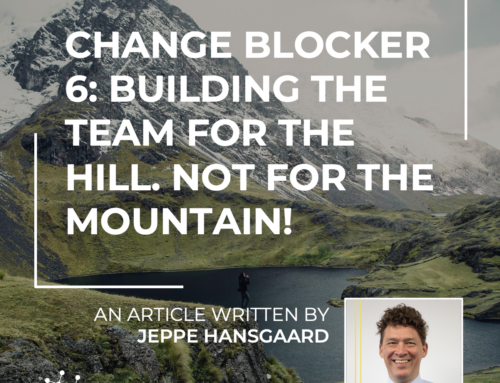When the Organization is Melting –
Add More Glue!
This article is co-authored with Jesper Bubandt Toft.
At the end of the day, Jeppe could not help feeling worried about what was going on.
In five consecutive zoom meetings, the managers at the other end of the Zoom connection all talked about one thing – With COVID our organization is melting away. We are worried about our culture and our ability to execute. How do we manage a dispersed organization? COVID and the lock-down have forced companies into new ways of working. For many executives, this causes uncertainty and pushes them out of their comfort zone.
What Causes Organization Uncertainty?
Externally, we all face the daily news about the implications of COVID, which can cause sleepless nights.
Internally in organizations, it is a triple combo. Firstly, the day-to-day interactions and connectedness with coworkers that give us our sense of belonging are challenged. Secondly, many companies have not given clear directions about what to focus on, and this has created uncertainty. Thirdly, leaders are themselves challenged, their plans, projects, and projections are failing and a new mode of decision-taking is taking over.
Crisis management was a good initial response to the uncertainty caused by COVID. However, as it has become clear that COVID will stay around for a long time, we face the enduring challenge of a dispersed organization, leaders must act on it.
The One-Off Opportunity to Create the Organization of the Future
Let us start with the good things. When we all are at our own home location a lot of the unconscious bias of decision-making and leadership stops. Informal alliances have a harder time. Close to ear and office politics have a harder time.
The playing field has leveled out, and we believe there is no better opportunity for executives to build the platform for the successful organization of the future.
What you need to do is to:
1. Ensure Communication is Possible
All employees must be able to connect and work remotely. This is the challenge everybody has been jumping at first. Ensure the basic tech, the bandwidths, and the competencies. You need to make communication possible.
2. Create Clarity
More importantly, create clarity of strategic direction! Share your view and brief your people on what the strategic direction is and how you expect everybody to accomplish and contribute. Emphasize your brief is to be understood as guiding principles with room to maneuver at the local team level. Resist your urge to make a detailed plan. Detailed plans will fail. Briefs will create clarity and set a common course.
3. Design your Collaboration Grid
Be precise in establishing your collaboration grid. Who talks with who about what? Who has the power to decide? Who needs to know? Use the work that needs to be done as the cornerstone for the design of this.
Remember no collaboration happens by itself anymore. People are not bumping into each other in the hallway anymore.
4. Keep Track
Use hard and soft metrics to see how the organization is unfolding. Hard metrics such as sales, project progress, and customer retention. Soft metrics such as well-being, team connectivity, speed of decision making, and implementation of your collaboration grid.
Keep track of these on a regular basis. Minimum once per month.
5. Keep Cool
Give the new collaboration grid time to show its value and stay out of people’s way. Let them work.
Remember the classic John Kotter meme: The iceberg is melting.
And now it really is. The type of uncertainty we face right now is the worst because you cannot work through it on your own. You depend on others – your team, your leaders, and your employees – to succeed.
Make sure you keep them connected!
ORIGINALLY POSTED ON LINKEDIN BY JEPPE VILSTRUP HANSGAARD: https://www.linkedin.com/pulse/when-organization-melting-add-more-glue-jeppe-vilstrup-hansgaard/
Do you like our articles? Subscribe to our newsletter.








